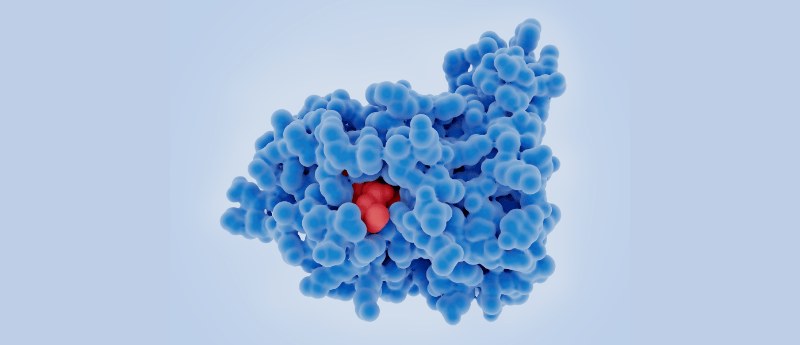Tumor organoids: an expert insight

 Maryna Panamarova (left) is a Cellular Modelling Technical Specialist at the Wellcome Sanger Institute (Cambridge, UK), in the scientific operations department. The scientific operations department helps to deliver science at scale by developing and championing an array of cutting-edge technologies in sequencing, cellular and molecular biology and spatial genomics.
Maryna Panamarova (left) is a Cellular Modelling Technical Specialist at the Wellcome Sanger Institute (Cambridge, UK), in the scientific operations department. The scientific operations department helps to deliver science at scale by developing and championing an array of cutting-edge technologies in sequencing, cellular and molecular biology and spatial genomics.
Here, Maryna discusses the emergence of tumor organoids, tips for best practice when using them and the impact they are having on the drug development field.
What is the focus of your work at the Wellcome Sanger Institute?
I work in the Cellular Modelling team within Scientific Operations, where we are focused on large-scale production, biobanking and validation of advanced cellular models from patient-derived tissues and reprogrammed stem cells. To achieve the reproducibility, repeatability and consistency required for large-scale studies we implement robotics, automation and rigorous quality controls in our pipelines.
Over the years, our team has made significant contributions to various global initiatives aimed at developing improved models for studying human diseases. One notable project is the Human Cancer Model Initiative (HCMI), an international effort to establish patient-derived next-generation cancer models.
Since the project’s inception in 2016, we have been creating and cryopreserving organoid models from a variety of tumors, including colon, oesophageal, pancreatic, mesothelial, ovarian, and gastric cancers, with the objective of making them accessible to the research community. To date, the Sanger Institute has contributed over 200 novel models, which can be viewed in the HCMI catalogue, with some also available through the American Type Culture Collection (ATCC).
Can you give us an insight into the applications of tumor organoids?
Organoids can preserve the genomic characteristics of the original tissue, allowing us to establish correlations between genetic mutations and drug reactions through drug screening. Various automated platforms are being developed and implemented to tackle the technical challenges of rapid and high-throughput organoid screening.
Such screenings can yield personalized drug sensitivity profiles, explore the combined effects of different drugs for combination therapy, and facilitate innovative biomarker research. Another significant use of cancer organoids is in CRISPR screens, which serve as a powerful tool for biological discovery. This enables unbiased exploration of gene function and aids in studying the origin of tumors. Advances in cancer organoid culture technology have made it possible to integrate CRISPR technology and conduct large-scale whole-genome screens on organoids.
What techniques can be used to ensure that organoids are of the correct characteristics and quality to accurately model tumors?
When establishing new organoid lines, it is essential to validate these organoids against primary tumor samples to ensure the accuracy and fidelity of the model. Molecular characteristics can be examined through whole-genome sequencing (WGS), targeted sequencing to pinpoint genetic mutations specific to the tumor of interest, and RNA sequencing to evaluate gene expression profiles.
Moreover, it may be necessary to validate a variety of phenotypic characteristics to confirm the similarity between the organoids and the original tumor. This comprehensive validation can be accomplished using histological analysis, proteomic analysis, and various functional assays, including drug sensitivity and resistance testing, as well as metabolic profiling.
By integrating these molecular and phenotypic characterization techniques, researchers can confirm that the organoid model faithfully represents the molecular and phenotypic features of the primary tumor, enhancing its utility for cancer research and therapeutic development.
Do you have any tips for best practice or troubleshooting challenges when developing tumor organoids?
Ensuring rigorous quality control measures is crucial during the derivation and maintenance of organoid tumor models. For HCMI, the organoid lines derived from patients’ tumor samples had to undergo an extensive propagation process to serve as a valuable resource for the scientific community. Therefore, evaluating long-term stability and reproducibility was a key step in our pipeline.
Additionally, our quality control procedures involve closely monitoring cell viability and proliferation rates to guarantee the health and growth of the organoids. Ensuring morphological consistency is also an important qualitative assessment to maintain consistent and reproducible morphology across passages and experiments.
When an organoid model is in culture over a long period of time and handled by multiple people, it’s also important to perform cell authentication analysis to ensure there is no cross-contamination between different lines.
What are some of the most exciting developments to emerge as a result of tumor organoids?
One of the most exciting developments resulting from the scientific community’s full adoption of organoid technology is the shift in public health policy, specifically the FDA Modernization Act 2.0 signed into US legislation in 2022. This legislation no longer mandates the testing of new medicines in animals to receive FDA approval.
This marks a significant change in the perception of how advanced human cell models, such as organoids, can be utilized in preclinical drug testing. These models have transitioned from playing a minor role between 2D cell lines and animal studies to potentially taking center stage in preclinical drug development. Preclinical studies involving the use of animals can be time-consuming and expensive, and in some studies there may be a degree of unavoidable suffering for the animals involved, although mitigating actions to ameliorate any potential harms are always considered.
Therefore, the transition to advanced cellular models like organoids, engineered microphysiological systems (MPS), and organ-on-chips is a crucial step towards reducing the number of animals used in biomedical research and reliance on study data obtained from laboratory animals. This shift also paves the way for the development of novel models that more accurately represent human pathology, thereby enhancing the efficiency of drug screening and development processes.
If you could ask for one thing to improve the utility of tumor organoids, what would it be?
One of the major challenges hindering the widespread adoption of tumor organoids is the limited accessibility to this valuable resource. While organoids are being generated and distributed by numerous academic groups, research institutes, and commercial organizations, the lack of robust standards to describe these models creates difficulties for researchers in identifying and comparing models of interest across various academic and commercial sources.
For researchers seeking a model with specific characteristics, the process often involves searching through multiple databases and repositories, downloading metadata and data from various sources in different formats, and then transforming and analysing this information. This labor-intensive process is not only time-consuming but also often requires specialized computational skills, limiting the accessibility of the resource and ultimately reducing the potential impact that organoid models could have.
To tackle this issue, our colleagues at the European Bioinformatics Institute (EMBL-EBI; Cambridge, UK) in collaboration with The Jackson Laboratory (ME, USA) have developed a platform called CancerModels.Org.
This platform simplifies navigation of published cancer organoid models, and other patient-derived cancer models from academic and commercial providers, by providing access via a standardised approach. It employs FAIR principles (Findable, Accessible, Interoperable, and Reusable) for the data and metadata associated with the creation and assessment of organoid models, thereby enhancing the efficiency and accessibility of these invaluable resources for cancer research. CancerModels.Org is the largest open-access resource of its kind providing a unified entry point to over 8300 patient-derived models.
The opinions expressed in this interview are those of the interviewee and do not necessarily reflect the views of BioTechniques or Taylor & Francis Group.
This article was supported by Sartorius
